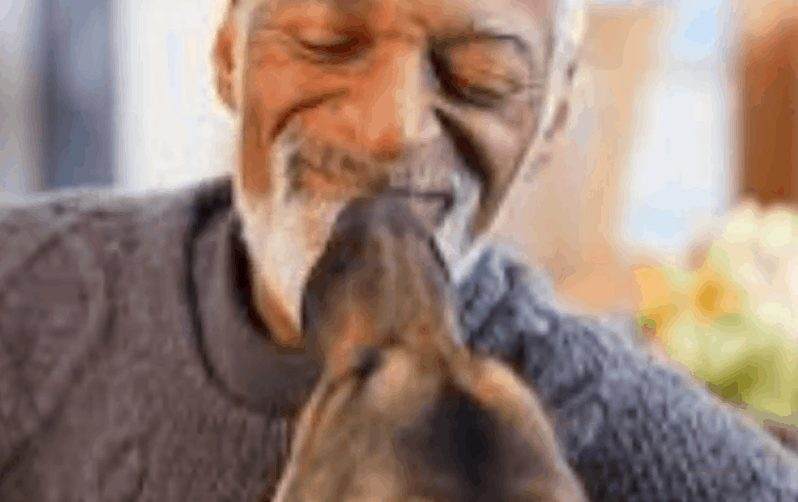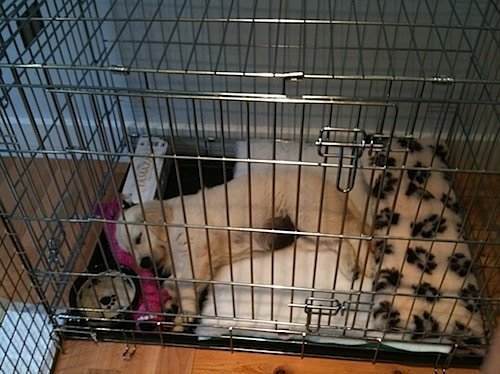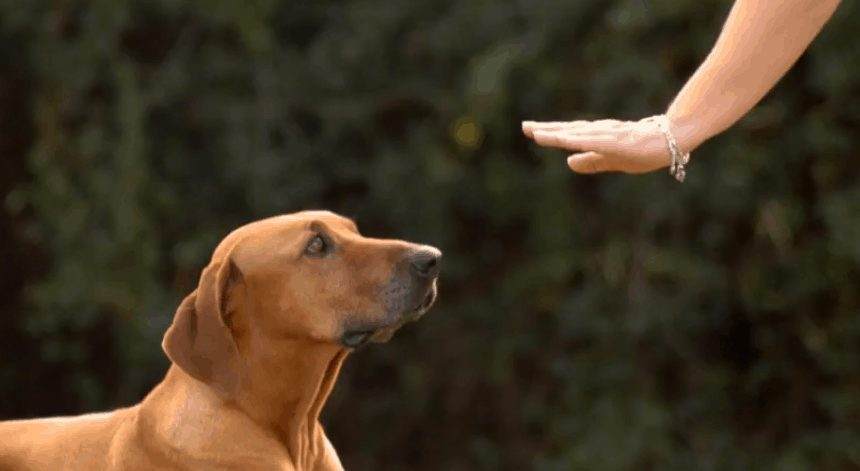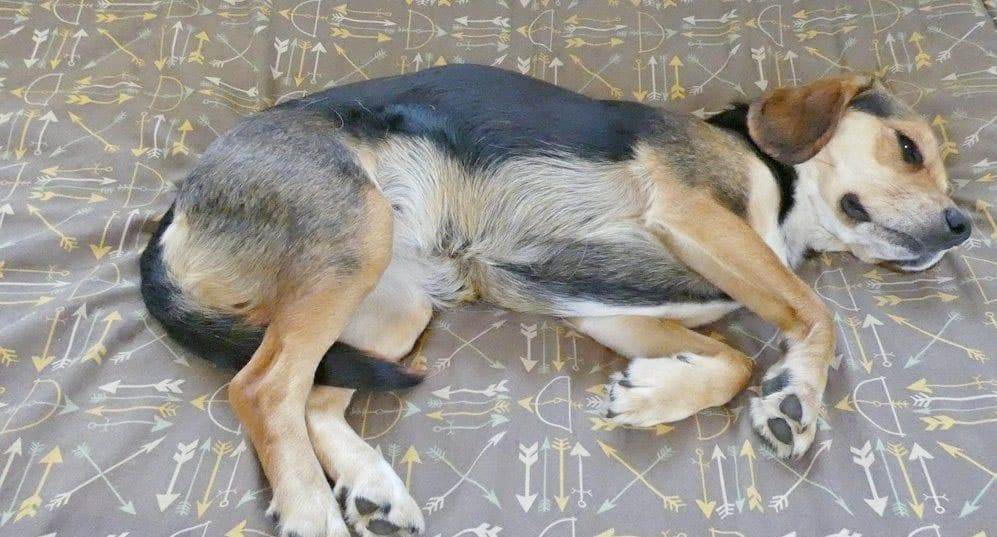Some of the common solutions to breaking the dog’s anxiety behavior are indoor/outdoor exercises, crate training, dog TV and dog toys. It is also a good idea to slowly increase your away time when you have a puppy which makes him/her learn that you will be away.
An abrupt alone time for the dog is confusing to him because he will think that he is being punished for something. With proper care and using the methods described here, one can definitely reduce the dog’s separation anxiety.
Separation anxiety in dogs is often distressed and destructive behavior associated with separation from their pet parents. Sometimes the anxiety only takes a few minutes though.
Pet parents often mistake this to disobedience or spite, but it actually happens at their parent’s absence.
What Separation Anxiety is Not:
Dogs often love playing or as they call it exploring the world with their noses and mouths, they do so at times by chewing up socks or pulling a few pieces of paper from the trash. The following dog behaviors are not anxiety but a normal reaction.
1. Doggy Boredom
It’s quite easy to tell separation anxiety from doggy boredom. Separation anxiety behavior often happens when you’re not around or every time you’ve gone. It’s most likely your dog has learned your routine to leave the house so it shows signs before you go.
2. Health Condition
Hypothyroidism and rabies vaccinators are health conditions that cause behavioral symptoms that are similar to symptoms of separation anxiety. So you have to be keen not to confuse both.
It’s important for you to understand the real fear that trigger destructive behavior. Helping your dog overcome this involves dealing with the anxiety first not the behavior it provokes. The faster you address this the better the chances of success.
Signs of Separation Anxiety in Dogs
Physically visible signs of separation anxiety are:
- Drooling
- Whining or Barking
- Howling
- Panting
The behavioral signs include:
- Not eating the food you left for him
- Aggression on household items
- Continuously trying to escape from one room to other
- Super excited to see owner back from work in evening as if they are meeting after decades
Simulated Dog Separation Anxiety
There is true separation anxiety as well as simulated separation anxiety where the dog behavior appears to be real but it’s a learned one.
Simulated separation anxiety is manifested when the dogs lack self-control. True separation makes the dog experience real stress during the owner’s absence.
In simulated the dog knows that it will get your attention, some dogs feel noticed when they get reprimanded for such behavior. Negative attention can be rewarded especially if the owner is unaware that certain needs of his dogs are not met. It’s often misbehavior.
Simulated anxiety can easily be overcome by slowly increasing the amount of time spent, consistent obedience training, the proper amount of exercise, and strong leadership. Severe cases of true separation anxiety call for a challenge to pack leaders.
How to Stop Dog’s Separation Anxiety
I’m going to talk about how to deal with separation anxiety. Many of you have been advised to use this tool, that tool and to do this, to do that. But you’re still having some challenges with the separation anxiety.
Don’t worry, I’m going to explain it all and it’s all going to make sense. Also, I’m going to share with you some solutions that you can use to help your dog deal with separation anxiety.
Your goal as a pet parent is to find the best calming anxiety treatment for your pet and in most cases, it doesn’t require a medical professional.
With persistence and dedication, you can succeed on your own as it behavioral changes that will help your pup learn being alone is not scary
#1 Understand the Real Causes of Anxiety in Dogs
One of the problems that many dog owners have is that they’re leaving their dogs home because they have to go for work. Not all companies are like Google which allow employees to bring in their dog with them.
Their dog has a hard time dealing with being left home alone. In general, they get anxious or develop anxiety which we call separation anxiety. One of the first things that you have to find out is the exact reason for their anxiety. It can be because of being separated from a certain individual or a certain place like:
- Their favorite home
- Favorite crate
- The very favorite bed
- Getting anxious to go somewhere
Some dogs who come to our daycare get anxious just for being in a daycare environment. But they do well in the home environment. Maybe the dog is feeling anxious about certain things, could be that they’re missing:
- Their toy
- They’re missing their favorite couch
- They’re missing their favorite routine throughout the day
Something causes them to become anxious. In general, you have to find out first, what is causing your dog to be anxious. In most cases I would say is separation anxiety towards a person.

#2 Dogs are as Social as Humans
Your dog may be missing you while you’re going out or leaving them home alone. Or it could be that they’re missing the whole family. One of the first things that you want to understand is that dogs are social animals.
It means that dogs love to be around another social being. That could be a human, could be dogs as well but dogs have been bred to live with humans and for humans.
Therefore dogs are very attached emotionally and physically in general to humans. We have bred them to live with us, to work with us, to stay with us.
Thus they’re naturally attracted to the idea of being social around humans and being around and having that human company with them. For getting more social and friendly with your dog, check out our expert resource about playing fetch with your dog.
If you’re leaving your dog alone, you’re telling your dog that you’re not part of my pack. You’re not part of my social group. In a way, you’re giving the message to the dog that you are punishing your dog for certain things they have no idea about.
So in a way your dog doesn’t know first of all why is he/she is left home alone. Secondly, they think that they’re being punished.

#3 Your ‘Leaving’ Signals for your Dog
Use a different door, leave your shoes or purse in a different location, get ready to leave but leave after 15 minutes. The goal is to prevent triggering your dog’s anxiety, as you leave you can distract your dog by giving them a treat or toy to play.
Calming treats for dogs are used as short term remedy, to teach your pup that being alone is not scary and create positive associations.
#4 Goodbyes
Don’t get emotional when leaving or exited when coming back home to your dog. This may enforce the dog’s fear of absence. Calmly say goodbye while leaving and don’t forget to quietly say hello, remember not to be too affectionate until your dog has calmed.
#5 Exercise
Exercising is important. When the dog tires from exercise, his internal system is more relaxed. The dog feels satisfied with his life and can stay alone for longer periods. You can exercise your dog before leaving for work. 25-30 minutes of fetch and running should do the trick.
#6 Train When You’re Home
Tell your pooch to stay in a room different from the room you are in. Start with 5-10 minutes interval as you work towards 20-30 minutes over some time.
#7 Personal Room for Dogs
Get your dog a separate bedroom where you can pet them and give them calming treats. It will teach your dog to enjoy personal space and be independent, it will ease their anxiety while you are gone.
You can always monitor your dog in another room using a dog/pet camera. These cameras can stream the video on your smartphone and TV’s.
#8 Leave Comfort Items
Leave items that have your scent for instance dirty laundry to help it relax and remember you, remove stress factors such as chains, chokers, and collars. Hide treats so they can hunt them while you’re away. Finally, soothing nature sounds can relax and soothe your dog to sleep.
#9 Always Try to Reduce Your Away Time
If you need to be away for more than 8 hours you can bring them with you. Your dog can learn to be alone for a short time only. When you leave for several days as a friend or relative or even a doggy daycare to take care of it.
#10 Medicine
Consider calming medicine, for severe dog anxiety separation. Contact your veteran for this though.
#11 Crate Training Helps
Many dog trainers advise against, but you can use it to train their minds. You can the following with crates;
Let your dog familiarize with being in the crate, Start with short periods as you move higher. You can feed it in the crate or leave him with his favorite bone as a stress reliever while it’s in there.
You can as well use interactive toys mostly when you are present. Your dog’s mind will be stimulated while attempting to remove the toy, in the process relaxes its mind and soothe to sleep.
The crate should be your dog’s safe haven, a place it feels secure and enjoys enough for him to stand and lay down easily.

If he barks in the crate, look for ways to control that. Teach him quiet is good and interrupt the barking so that he knows it badly. You can get a good bark collar, you don’t want annoyed neighbors. When leaving do so quietly without providing cues, go through your leaving routine quietly.
Come back home paying no attention to your dog. Walk past him smiling but ignore it if it’s banging at the crate. Get him familiar so familiar with this whole process that he accepts it.
Place the crate in the busiest room. The goal is for your dog to accept the normal every-day movements, happenings. Your dog should realize that you are in charge. You can have more than one crate, this way it will familiarize. Dogs enjoy music and TV, leave them on as a feeling of security.
Here are the most entertaining dog music videos from Youtube:
#12 Train Your Dog Like a Kid
By understanding this fact, you can understand that you can’t just leave your dog home alone all of a sudden. You have to teach them that you’re not punishing your dog by leaving your dog home alone. So what you have to do is to take a few steps before leaving your dog home alone.
#12.1 Planning is Crucial
The first step is that you have to start planning ahead. You can’t just all of a sudden start leaving your dog home alone from tomorrow. You have to plan ahead, maybe five-six months ahead. Start training your dog to get used to the idea of being home alone.
#12.2 The Wait Command
The second thing that you can do is start teaching your dog the wait command. The wait command is different than stay command.
Stay command is a command that we teach the dog to stay in that position, in that spot and we are visible to the dog. So the dog has that visual of us in front of him/her but wait is different.
The wait command is long and you are not visible to your dog. The way we teach this is, you’re going to teach the dog to stay first. So you can teach your dog to stay up to 3-5 minutes and you’re visible in front of your dog,
Then you move on to teaching your dog the wait command. The wait command is going to be longer than five minutes obviously and up to four hours.
So you’re going to teach your dog to stay in a room and then you’re going to leave the room for instance and come back in ten seconds. You’re going to tell him/her to stay or wait and you’re going to leave the room.
You’re going to come back in twenty seconds. Keep increasing the time to the point that you can leave your dog for an hour and come back and your dog is in that position. Then you’re going to work on to make it to two hours, three hours and then four hours till the maximum that you want to leave your dog home alone.

Dont’s During Separation Anxiety
- Punishment – Don’t punish them. In fact, punishment will only escalate your dog’s separation anxiety.
- Get another dog or pet – The existence of another dog will not resolve the problem. But for young dogs, this might the ultimate choice
Conclusion on Curing Dog Separation Anxiety Quickly
So this way you can teach your dog to wait for you instead of being stressed and not knowing what he is supposed to do. When you teach your dog to wait, your dog has a purpose, your dog has a goal, your dog knows exactly what’s going on.
Your dog knows that you’re going to be back soon whether if it’s in four minutes or four hours, you’ll be back.
So try the above instead of investing in tools and solutions that don’t work. Other commercial products and methods like jackets, aromatherapy, leaving the Dog radio or TV on while you’re away are all temporary solutions.
You want to invest in training your dog for a long time (5-6 months) until your dog is nice and comfortable and ready to be left alone. Then you can leave your dog home alone. Then you’ll see that your dog has less anxiety when you leave your dog home alone.
By the way, there are some dogs that enjoy being alone for a short time. I don’t want to generalize this idea of all dogs can tolerate being alone but some dogs enjoy it and some dogs can’t tolerate it. Sometimes what you have to do is teach them, train them.
Sometimes you may have to hire a professional to come and look after your dog after a few hours they are left home alone. While you’re at work, you can send your dog to daycare or you can ask a family or friend to come and walk your dog out every few hours.
I hope all these solutions and ideas are going to give you a good start to help you with the separation anxiety of your dog.
References
- https://avmajournals.avma.org/doi/abs/10.2460/javma.2001.219.467
- https://docs.lib.purdue.edu/open_access_theses/1234/
Table of Contents




